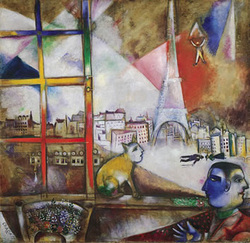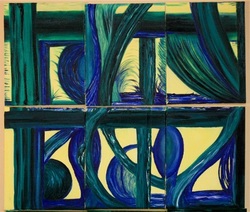If You Could Make Your Own Window To The World

Would your window be a single painted canvas or a series of panels? Would it be abstract or realistic? Could it even be symbolic? This unit of study will give students an opportunity to experiment with different painting styles, techniques and media, explore modern and contemporary painters and create their own painting.
|
Unit Length: 1 School Quarter (9 weeks)
Essential Concepts:
Objectives: 1. Students will demonstrate their understanding of the qualities of watercolor, acrylic and oil paint through the creation of a painting sampler book. 2. Students will understand and be able to articulate the qualities of watercolor, acrylic and oil paint through written and oral reflections. 3. Students will research to find out how artists have used windows symbolically or structurally in the creation of art. 4. Students will demonstrate their understanding of symbolic color and objects as they relate to personal identity, and a chosen painting media through the construction of an original artwork. 5. Students will reflect, orally and in writing, on their art making process and artwork they created as it relates to their expression of personal identity. |
The Process:
Day 1-6 Experimental studio (Objectives 1 and 2) Day 7-11 Artists and Symbols (Objective 3) Day 13-14 Brainstorming Composition & Planning the Painting (Objective 4) Day 15-29 Painting Studio (Objective 4) Day 30-31 Presentation, Reflection, Critique Assessment: Formative assessment will be used through teacher monitoring of participation in discussions and class critique, research and studio working time. Summative assessment will be used with rubrics for the painting sampler booklet, artist/symbol usage worksheet, written reflection and final painting. Click HERE to view The Painting Process Video
|
